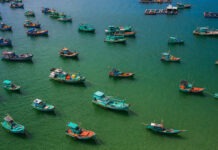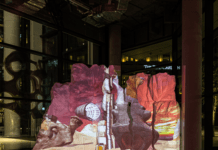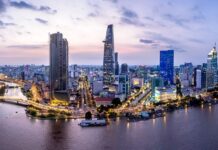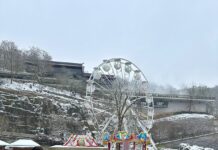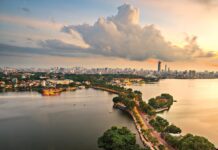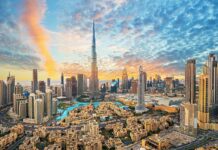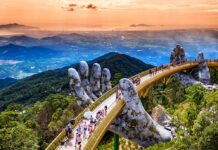Peru is a country of history, culture, beauty, and adventure, with a full spectrum of possibilities for travelers. The ancient Inca City of Machu Picchu is one of the highlights of any trip to South America, but there is much more to discover throughout Peru. Visitors can take a boat trip on the highest navigable lake in the world, look out over one of the deepest canyons in the world, try their luck sandboarding in the dunes, hike in the Andes, fish for piranha in the Amazon, explore the mysteries of the Nazca lines, walk through ancient ruins in the Sacred Valley, or experience modern Peru while wandering the streets of Lima. The diversity of the landscape, the people, and the experiences here make Peru one of the most unique destinations on the continent.

Lima: After Cairo, this sprawling metropolis is the second-driest world capital, rising above a long coastline of crumbling cliffs. To enjoy it, climb on the wave of chaos that spans from high-rise condos built alongside pre-Columbian temples, and fast Pacific breakers rolling toward noisy traffic snarls. Lima is also sophisticated, with civilization that dates back millennia. Stately museums display sublime pottery; galleries debut edgy art; solemn religious processions recall the 18th century and crowded nightclubs dispense tropical beats. No visitor can miss the capital’s culinary genius, part of a gastronomic revolution more than 400 years in the making.
Arequipa’s Historical City Center: At more than 2,300 meters, Arequipa is often regarded as Peru’s most beautiful city. Set against a backdrop of snow-capped mountains, the city center is a designated UNESCO World Heritage Site. The city’s main claim to fame is the old architecture constructed of sillar stone, a volcanic rock that radiates a bright color in the sunlight. Most of the colonial buildings in the historic city center are made from this stone, giving rise to its nickname of the ‘white city.’
Machu Picchu: Perched high upon a ridge, 300 meters above the Urubamba River, the majestic Inca City of Machu Picchu is one of the most dramatic settings of a ruined city anywhere in the world. Almost as impressive as the ruins themselves is the spectacular backdrop of steep, lush, and often cloud-shrouded mountains. Standing near the caretaker’s hut, looking out over Machu Picchu, the jungle covered mountains, and the river far below, it is not hard to imagine why the Incas chose this place to build their city.
Lima’s Plaza de Armas: One of the most pleasant places in Lima is the main square, Plaza de Armas (Plaza Mayor), in the heart of the city’s historic district. Most of the buildings on the square, a UNESCO World Heritage Site, date to the mid-18th century. The highlights around the Plaza de Armas are the cathedral on the east side and Government Palace on the north. Also of interest are the Archbishop’s Palace and the Casa del Oidor.
Cusco’s Architectural Treasures: Walking through the streets of Cusco is like wandering through a museum, with history built upon history in this UNESCO World Heritage Site. Inca ruins have been used in the foundations of many of the lovely old colonial buildings lining the narrow roads, showcasing the city’s long history. The main square, Plaza de Armas, in the city center is home to the Cathedral and La Compania, two equally impressive structures.
Sillustani: Situated outside the city of Puno and not far from Lake Titicaca, Sillustani is the site of some of the area’s most impressive funerary towers. Standing as high as 12 meters, these structures were built by the Colla people around AD 600 to bury their nobility. Most of the towers are set in a scenic area along the bank of Lake Umayo.
The Inca Trail: The famous Inca Trail is a four-day hike, which terminates at Machu Picchu, and is regarded by many as the highlight of their trip to Peru. This scenic trail is often more demanding than what many people are expecting, but also more rewarding. There are a couple of different starting points for the Inca Trail, but the traditional four-day hike begins at km 82 of the Cusco – Aguas Calientes rail line. From this point, the trail passes more than 30 Inca ruins and traverses through some spectacular scenery. The most difficult portion of the trail is the second day of the hike, with a climb of 1,200 meters in elevation gain and two high passes.
Lake Titicaca: The sparkling blue water of Lake Titicaca is surrounded by rolling hills and traditional small villages, offering a mix of beautiful scenery and culture that sets it apart from other regions of the country. Sitting at 3,820 meters above sea level, Lake Titicaca is known for being the highest navigable lake in the world, but it is also an extraordinarily scenic area where visitors can relax and enjoy some tranquility. A boat trip to the islands and surrounding villages is the best way to appreciate the lake. One of the main tourist attractions is the Uros Floating Islands (Islas Flotantes), which sustain small communities of Uros Indians. These are man-made islands constructed of reeds that have sustained a traditional way of life since the time of the Incas.
Colca Canyon: Although it was once thought to be the deepest canyon in the world, Colca Canyon, twice as deep as the Grand Canyon, is the second deepest after nearby Cotahuasi Canyon. The canyon reaches a depth of 3,400 meters and is the result of a seismic fault between two volcanoes. At the base far below is a winding river.
Nazca Lines: The mysterious Nazca lines are an unusual sight that will leave visitors with a sense of awe. These huge images on the desert floor were relatively undiscovered until planes flying over the area in the 1920s saw the lines from the air and realized they formed distinct patterns and images. From the air, it is possible to see 70 different plant and animal drawings as well as hundreds of lines and other geometrical shapes. Although it is not known exactly who created the lines or how and why, theories hold that the lines were the product of the Paracas and Nazca cultures sometime between 900 BC and AD 600.
Puerto Maldonado and the Amazon: Just a half hour flight from Cusco, Puerto Maldonado is a key jumping-off point for tours of the Amazon. This is a completely different experience than visitors will find in other parts of Peru, with hot humid jungle and a chance to see all kinds of unique wildlife. Caimans, capybara, monkeys, parrots, turtles, and piranhas are what visitors can expect to find in this part of the country.








